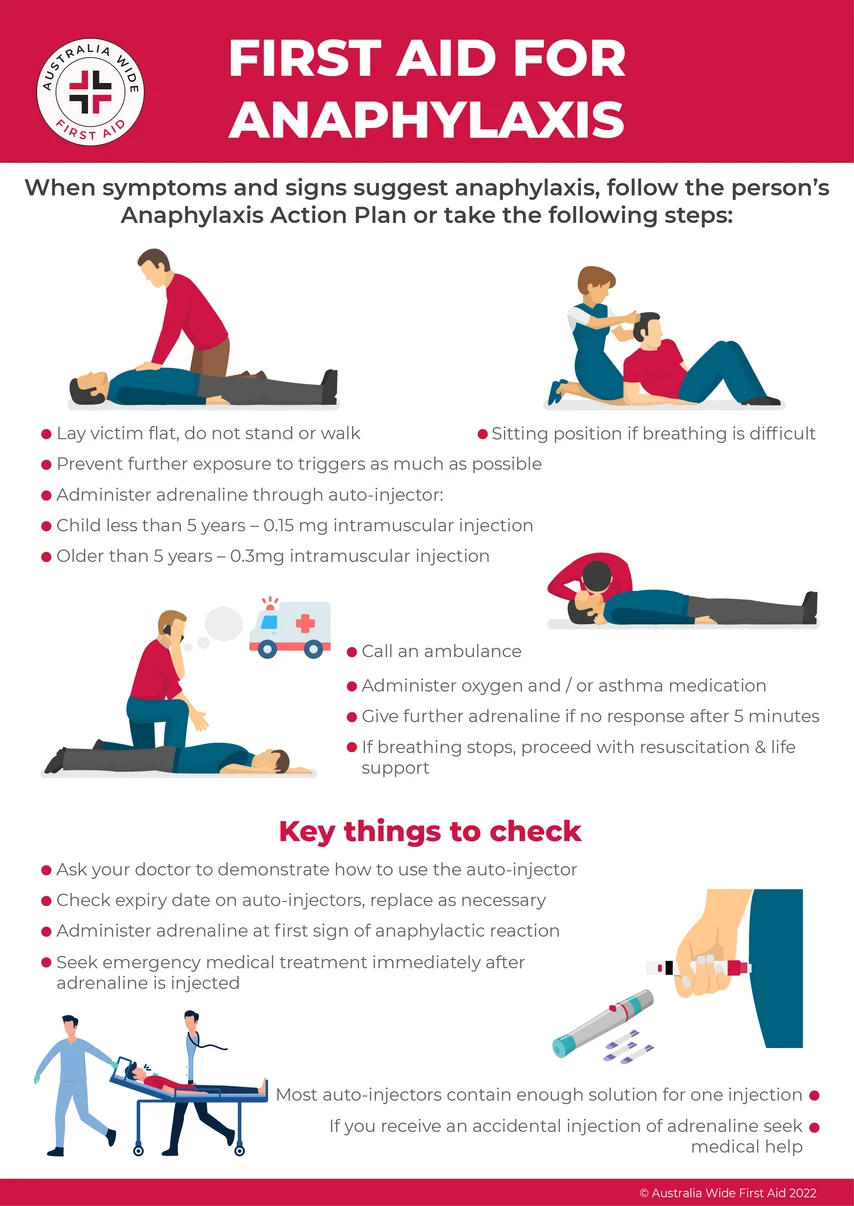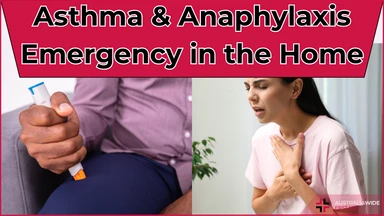Anaphylaxis and Adrenaline


Anaphylaxis is a life threatening allergic reaction. It can occur within minutes of exposure to a trigger substance.
The first line of treatment for an anaphylactic reaction is the injection of adrenaline using an epinephrine auto-injector such as an EpiPen or AnaPen.
EpiPen and AnaPen contain the active ingredient adrenaline, also referred to as epinephrine. Adrenaline is a hormone produced naturally by the adrenal glands in the body in times of stress. This prepares the body for extra energy exertion to allow the body to more readily handle life threatening situations.
When someone has an anaphylactic reaction they may encounter the following symptoms:
The adrenaline administered through an auto-injector works to reverse these symptoms by acting on alpha and beta adrenergic receptors in the body. The alpha receptors are located on the walls of blood vessels. By stimulating these receptors, adrenaline causes the blood vessels to narrow and stops blood pressure from falling too low. This process also redirects blood to vital organs.
Adrenaline also acts on beta receptors, which are found in the heart and lungs. By opening and relaxing the airways, this makes it easier to breathe. It also helps reverse throat tightness, hives, itching and skin swelling.
Adrenaline should be administered as soon as possible to a person going into anaphylactic shock. An auto-injector is designed for this but it’s an emergency treatment only. Anyone experiencing anaphylactic symptoms, should also seek receive further treatment from a medical professional.
An EpiPen or AnaPen auto-injector comes pre-filled with epinephrine which will automatically inject when the device is pushed firmly against skin.
The auto-injector should be pushed against the outer-mid thigh, NOT injected into veins, fingers, toes, hands or feet. When using an auto-injector, follow the instructions that come with it, or follow the advice of your doctor. It should be used at the first signs of a serious allergic reaction.
People who are susceptible to anaphylactic reactions should always carry an auto-injector with them, so it can be used immediately.
See the chart below for instructions on how to use an auto-injector.

If a person’s symptoms and signs suggest anaphylaxis you should follow their Anaphylaxis Action Plan or take the following steps:
If you want a more in-depth look at anaphylaxis at home or in the workplace, our online courses are the answer. You can complete them at your work desk or from the comfort of your own home, and get a Certificate of Completion to show your employer, add to your resume, or simply give you the peace of mind knowing you can actually help in an emergency. Our Anaphylaxis First Aid provides learners with the knowledge needed to recognise, respond to, and manage allergic reactions and anaphylaxis.
If you're after workplace-specific information, our Workplace Anaphylaxis Risk Management course covers responsibilities and best practices for managing anaphylaxis risk in workplaces. Alternatively, our Workplace Asthma and Anaphylaxis Management and First Aid course teaches the essential knowledge and practical tools to identify, manage, and respond to asthma and anaphylaxis risks in workplace settings.
If you have an auto-injector ask your doctor to demonstrate how to use it

October 2, 2013
In an asthma or anaphylaxis emergency you should know the symptoms, remove triggers, and know how to respond. Read on to understand these important aspects in the context of such an emergency.

May 7, 2024
Asthma, a chronic respiratory condition affecting millions worldwide, is often shrouded in myths and misconceptions. Despite how common it is, there is a distinct lack of common knowledge. This is leading to potential mismanagement and unnecessary anxiety for those living with asthma.

February 19, 2024
For many Australians, our city and outdoor lifestyles come with a hidden challenge – dust allergies. Dust mites, pollen, and other airborne particles can trigger allergic reactions, affecting a significant portion of the population.